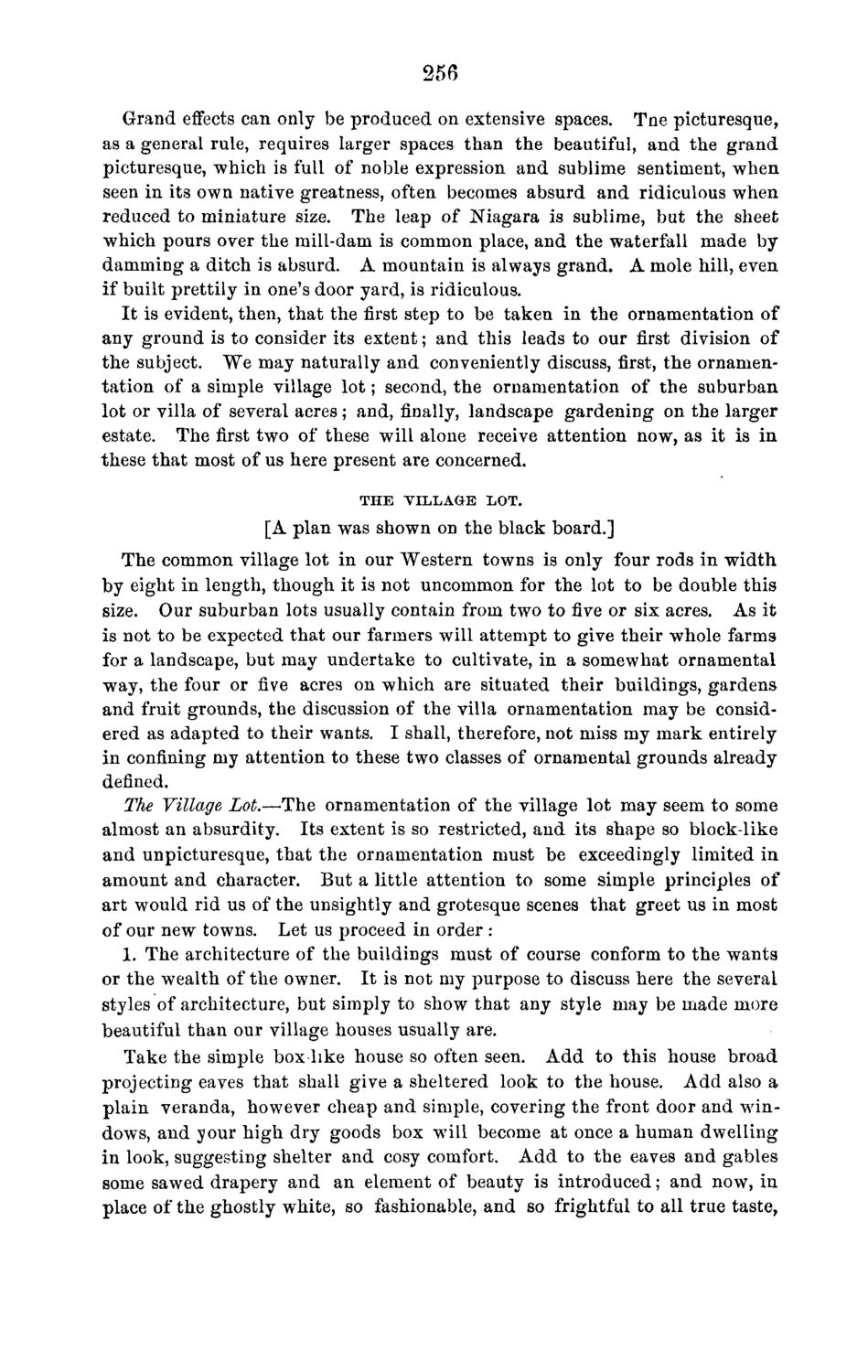| |
| |
Caption: Board of Trustees Minutes - 1870
This is a reduced-resolution page image for fast online browsing.

EXTRACTED TEXT FROM PAGE:
256 Grand effects can only be produced on extensive spaces. Tne picturesque, as a general rule, requires larger spaces than the beautiful, and the grand picturesque, which is full of noble expression and sublime sentiment, when seen in its own native greatness, often becomes absurd and ridiculous when reduced to miniature size. The leap of Niagara is sublime, but the sheet which pours over the mill-dam is common place, and the waterfall made by damming a ditch is absurd. A mountain is always grand. A mole hill, even if built prettily in one's door yard, is ridiculous. It is evident, then, that the first step to be taken in the ornamentation of any ground is to consider its extent; and this leads to our first division of the subject. "We may naturally and conveniently discuss, first, the ornamentation of a simple village lot; second, the ornamentation of the suburban lot or villa of several acres; and, finally, landscape gardening on the larger estate. The first two of these will alone receive attention now, as it is in these that most of us here present are concerned. THE VILLAGE LOT. [A plan was shown on the black board.] The common village lot in our Western towns is only four rods in width by eight in length, though it is not uncommon for the lot to be double this size. Our suburban lots usually contain from two to five or six acres. As it is not to be expected that our farmers will attempt to give their whole farms for a landscape, but may undertake to cultivate, in a somewhat ornamental way, the four or five acres on which are situated their buildings, gardens and fruit grounds, the discussion of the villa ornamentation may be considered as adapted to their wants. I shall, therefore, not miss my mark entirely in confining my attention to these two classes of ornamental grounds already defined. The Village Lot.—The ornamentation of the village lot may seem to some almost an absurdity. Its extent is so restricted, and its shape so block-like and unpicturesque, that the ornamentation must be exceedingly limited in amount and character. But a little attention to some simple principles of art would rid us of the unsightly and grotesque scenes that greet us in most of our new towns. Let us proceed in order : 1. The architecture of the buildings must of course conform to the wants or the wealth of the owner. It is not my purpose to discuss here the several styles of architecture, but simply to show that any style may be made more beautiful than our village houses usually are. Take the simple box like house so often seen. Add to this house broad projecting eaves that shall give a sheltered look to the house. Add also a plain veranda, however cheap and simple, covering the front door and windows, and your high dry goods box will become at once a human dwelling in look, suggesting shelter and cosy comfort. Add to the eaves and gables some sawed drapery and an element of beauty is introduced; and now, in place of the ghostly white, so fashionable, and so frightful to all true taste,
| |